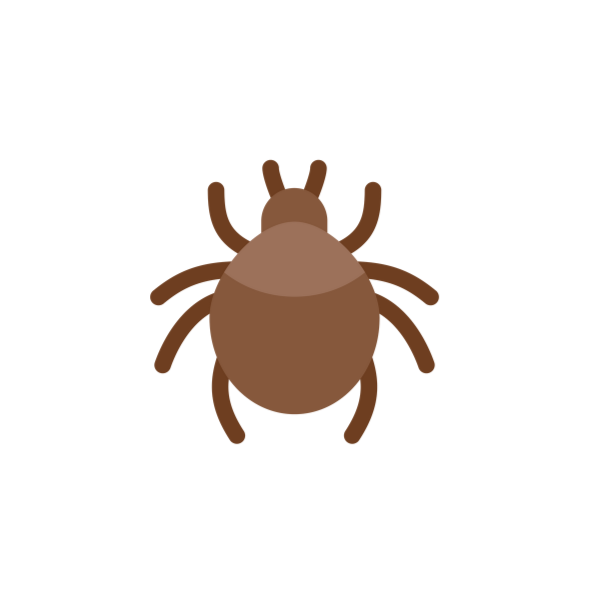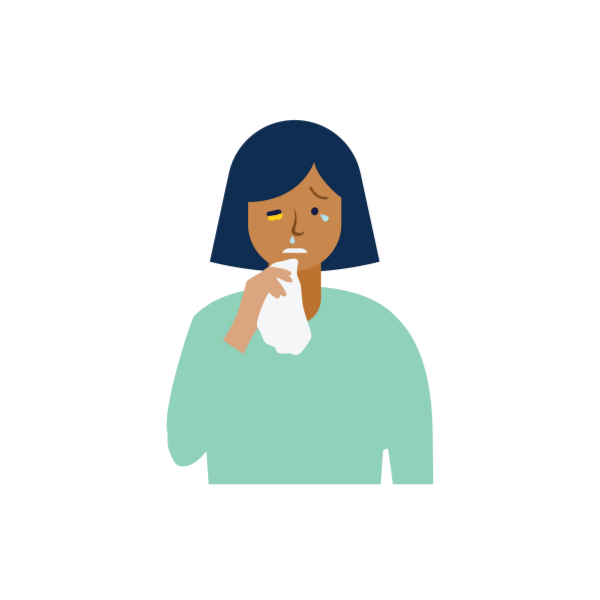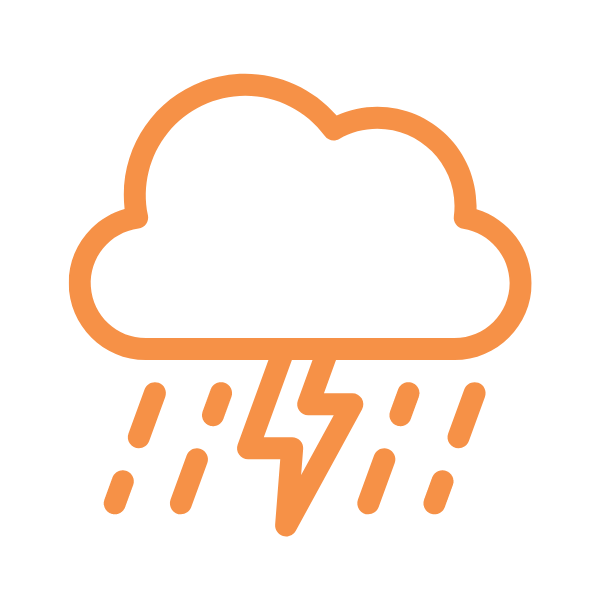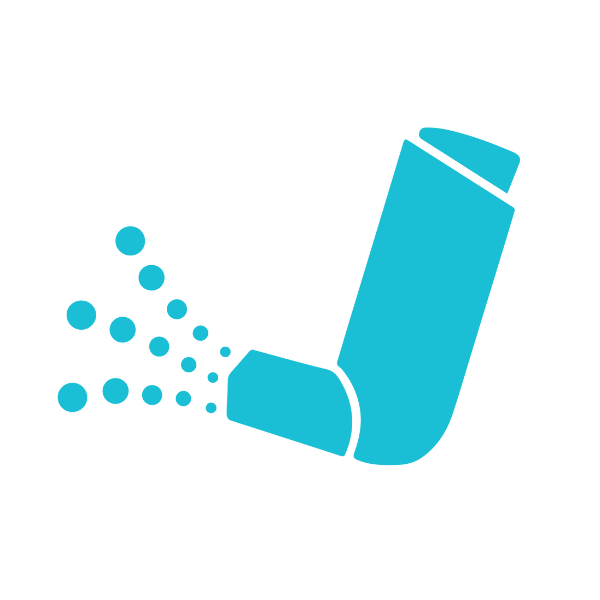What is asthma?
When people with asthma have an asthma attack, they experience narrowing of the airways in the lungs, which reduces the normal flow of air into and out of the lungs. This narrowing can be reversed using medications, and people with asthma can lead normal, active lives if they take their medication as prescribed by their doctor.
There is no cure for asthma, but it can usually be well controlled.
What can trigger asthma symptoms?
People with asthma have airways that are more sensitive to some things that may not affect other people without asthma. The things that set off your asthma or start symptoms are called triggers.
Triggers of asthma can be non-allergic or allergic.

Non-allergic triggers include:
- colds, flu and other viruses
- smoke
- exercise
- cold air or changes in temperature
- emotions (such as being very excited or upset)

Allergic triggers (allergens) include:
- dust mites
- pollen
- pets
- moulds
- sulphites in food/drink.

Medications
Some medications and natural or complementary treatments can cause symptoms in people with asthma. They include:
- Aspirin and other nonsteroidal anti-inflammatory drugs (NSAIDs)
- Beta-blockers
- Echinacea
- Royal jelly – can cause life-threatening allergic reactions (anaphylaxis) in some people with asthma.
- Andrographis paniculata – can also cause life-threatening allergic reactions (anaphylaxis) in some people with asthma.
Remember, it is important to always tell your doctor and pharmacist about any medications, ‘natural’, or complementary medicines you are taking.
It is important to know if allergies trigger your asthma.
Once you know what is triggering an allergic reaction, you should try to avoid, remove, or reduce exposure to it. This may help to improve your asthma and allergic rhinitis symptoms.
Information about reducing environmental allergen exposure such as dust mite and pollen can be found here.
Relationship of asthma to other allergic conditions
Allergic rhinitis
Allergic Rhinitis is one of the most common allergic conditions, affecting 1 in 5 people, while asthma affects about 1 in 10 people in Australia.

- About 75% of people with asthma also have allergic rhinitis, and about 25% of people with allergic rhinitis also have allergic asthma.
- The same allergens can trigger asthma and allergic rhinitis symptoms.
- Allergic rhinitis and allergic asthma are both caused by the body’s immune system reacting to common environmental triggers or allergens, such as pollen, house dust mites, moulds, and animal dander (skin cells and fur).
- Many people with allergic rhinitis caused by grass pollen can get allergic asthma in spring and summer when they also have allergic rhinitis.
- Allergic rhinitis symptoms commonly include an itchy, runny, or blocked nose, itchy or watery eyes, and sneezing.
- Better control of allergic rhinitis has been shown to result in better asthma control in both adults and children.
- Untreated allergic rhinitis may also increase the risk of developing allergic asthma.

Thunderstorm asthma
Thunderstorm asthma is triggered by a combination of high rye grass pollen levels and a certain type of thunderstorm, causing pollen grains from rye grasses to be swept up in the wind and carried long distances.
Pollen can burst open and release tiny particles that are concentrated in the wind just before the thunderstorm.
These small particles get deep into the airways and can trigger serious asthma symptoms.
Read more about thunderstorm asthma here.
What are the signs and symptoms of asthma?
The most common symptoms of asthma are:
- wheezing – a high-pitched sound coming from the chest while breathing out
- a feeling of not being able to get enough air in or being short of breath
- a feeling of tightness in the chest
- persistent coughing
You do not have to have all these symptoms to have asthma.
If you have been diagnosed with asthma and have also been diagnosed with a life-threatening allergy (anaphylaxis) such as food or insect allergy, it can be hard to know if you are having an asthma attack or experiencing anaphylaxis. This is because wheezing, difficulty breathing, and persistent cough can be symptoms of both asthma and anaphylaxis.
Is it asthma or anaphylaxis?
ALWAYS give adrenaline injector FIRST, and then asthma reliever puffer if someone with known asthma and allergy to food, insects or medication (who may have been exposed to the allergen) has SUDDEN BREATHING DIFFICULTY (including wheeze, persistent cough or hoarse voice) even if there are no skin symptoms.
If it turns out that you were having asthma and not anaphylaxis, giving an adrenaline injector is not dangerous for people having asthma and can help as it opens airways making breathing easier.
Hear what Dr Preeti Joshi has to say about asthma and anaphlaxis.
If in doubt, give the adrenaline injector.
Signs and symptoms of anaphylaxis
Learn about the signs and symptoms of allergic reactions, and the difference between a mild or moderate reaction and a severe reaction (anaphylaxis).
Emergency preparation
Learn more about preparing for an emergency, and how to identify and respond to an allergic reaction including anaphylaxis.

Diagnosis of Asthma
Like with diagnosing other medical conditions, your doctor will ask you some questions, perform a physical examination, and may order some tests. They will likely:
- Ask you about your symptoms.
- Do a physical examination – listen to your chest and look inside your nose.
- Organise for you to do lung function tests or spirometry to see how well your lungs are functioning.
- Ask about your and your family’s history of other allergies or allergic conditions like allergic rhinitis, food allergy, eczema or hives.
- May also perform skin prick tests and/or blood tests to look for common allergens that cause allergic rhinitis and asthma such as dust mites and grass pollen.
Allergic asthma management
Make sure your doctor has completed an Asthma Action Plan for you. This plan will have information on how to treat and manage your asthma on an ongoing basis and will include instructions on what to do in case of worsening symptoms.

Medications
- Reliever medications or bronchodilators are fast-acting inhalers (puffers) that open your airways and reduce asthma symptoms quickly.
- Preventer medications contain inhaled corticosteroids (ICS). They must be taken daily, even if you are not experiencing asthma symptoms. Generally, people who need reliever medication more than twice per week will be prescribed an asthma preventer medication.
- Combination preventer medications are sometimes prescribed if your asthma is not well controlled. They contain an inhaled corticosteroid (ICS) or preventer plus a bronchodilator or reliever medication.
- Oral corticosteroids are sometimes prescribed for a short time to help control asthma when it flares up.
- Biologics/Injectables are used for patients who have uncontrolled asthma even though they are on preventer medication. If you feel you are not getting enough control of your symptoms with your allergic rhinitis and asthma preventer medication, speak to your allergy specialist or respiratory specialist about possible biologic/injectable medications.
- Allergic rhinitis treatment/s – make sure you are taking them as advised by your doctor.
It is important that all nasal sprays and asthma inhalers (puffers) are used correctly to ensure the medication gets to where it needs to be and works to control symptoms.
With the National Allergy Council, we created an animation and infographic to help people use nasal sprays correctly.
Videos demonstrating the use of specific asthma inhalers (puffers) and nasal sprays are available on the National Asthma Council website.
Remember, good management of allergic rhinitis can help control allergic asthma symptoms.
The above animation has been shared with permission from the National Allergy Council.
When do I get referred to see a specialist?
If you have moderate or severe allergy or asthma, your doctor may refer you to a clinical immunology/allergy specialist or other specialist, such as a respiratory specialist, for testing, diagnosis and management.

